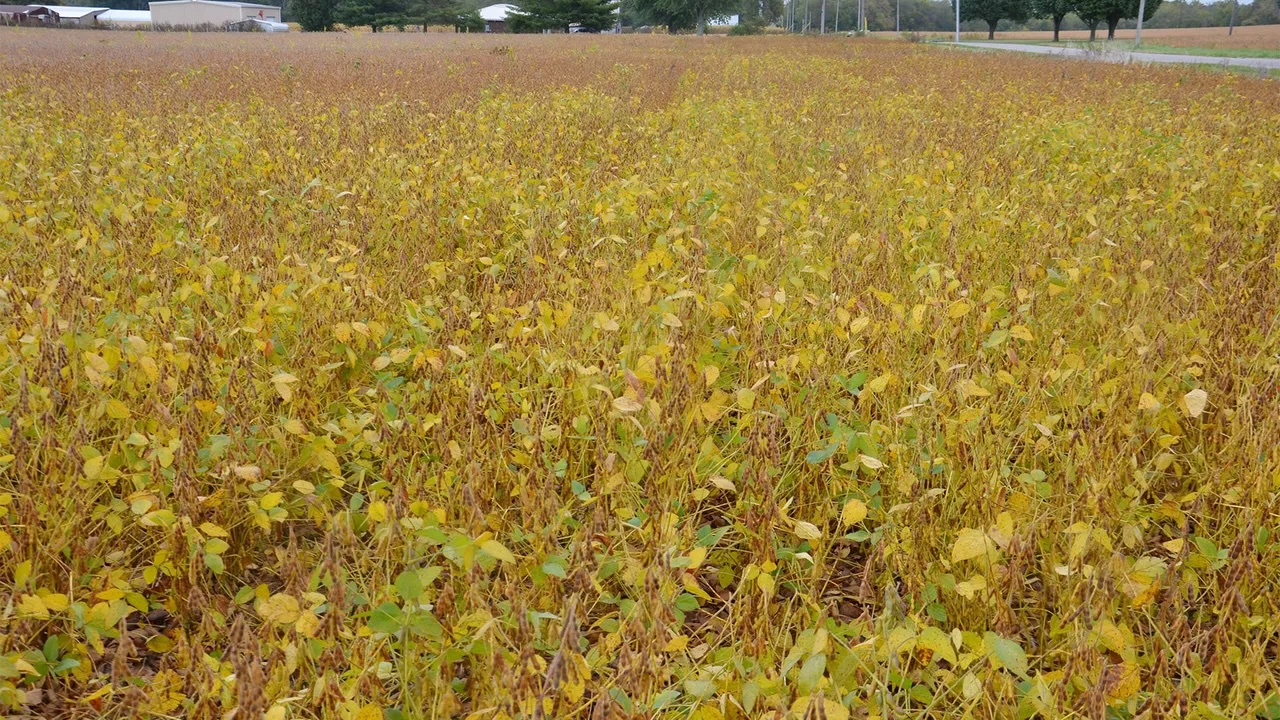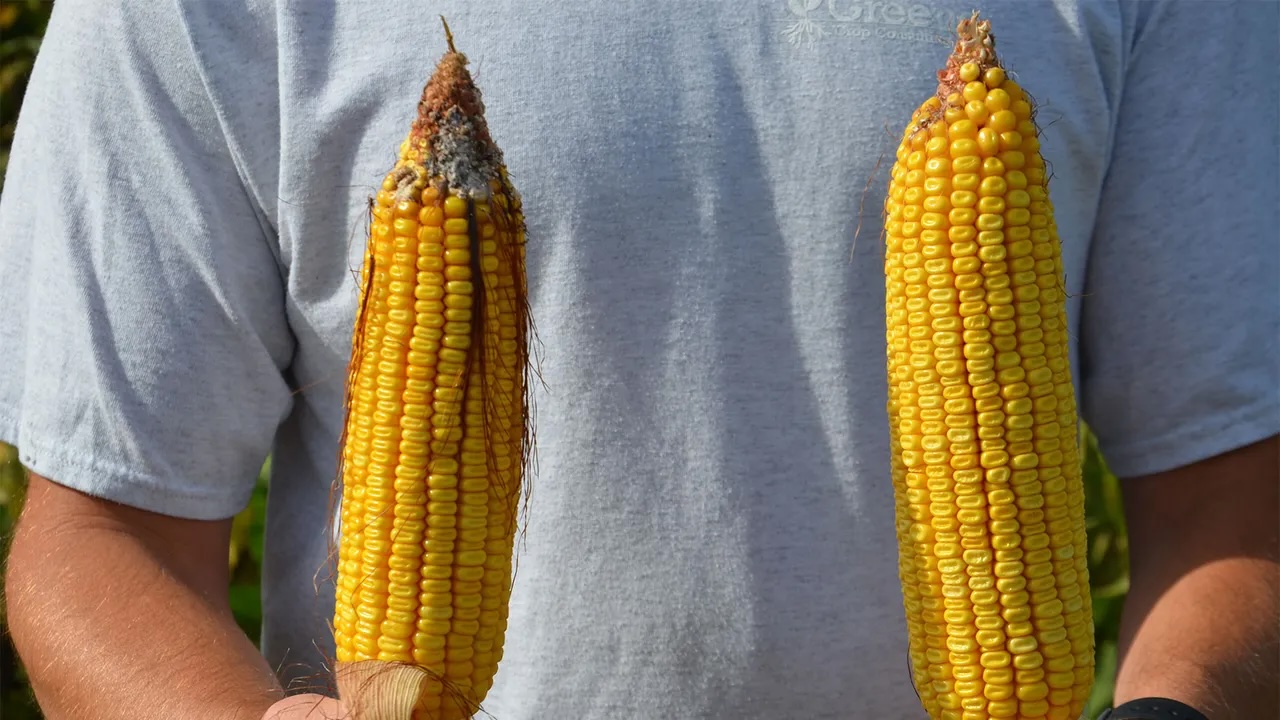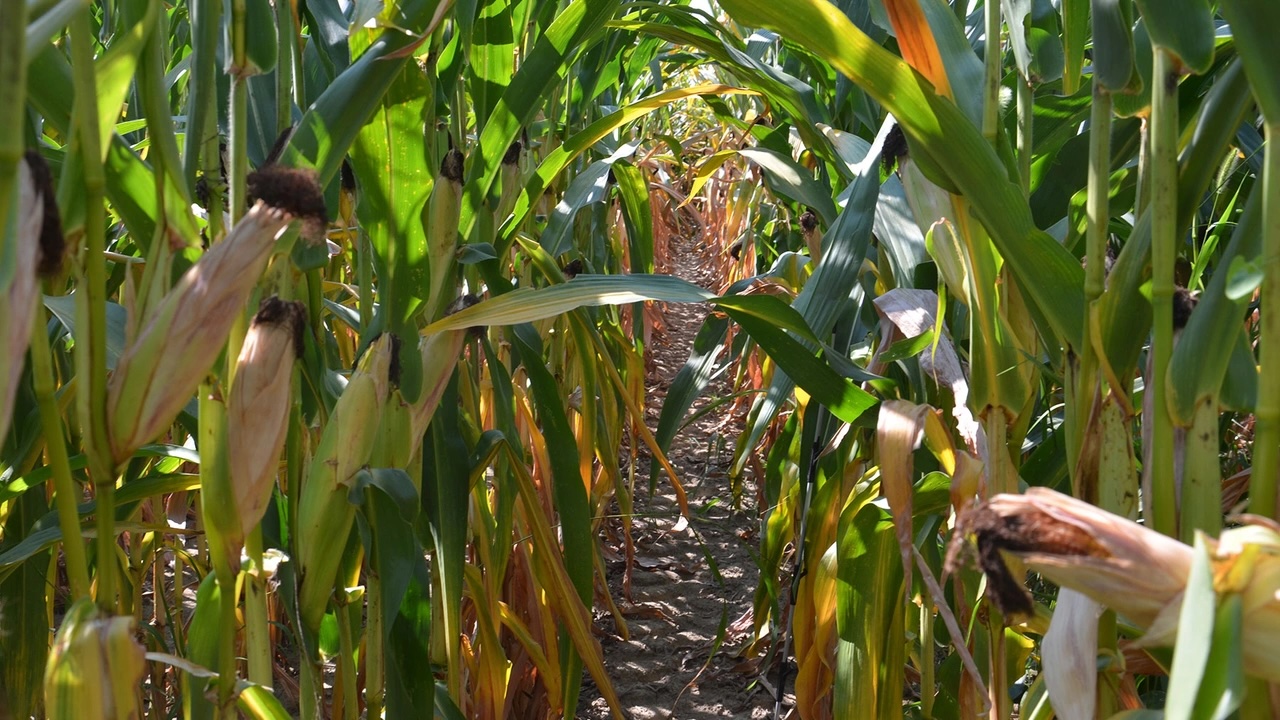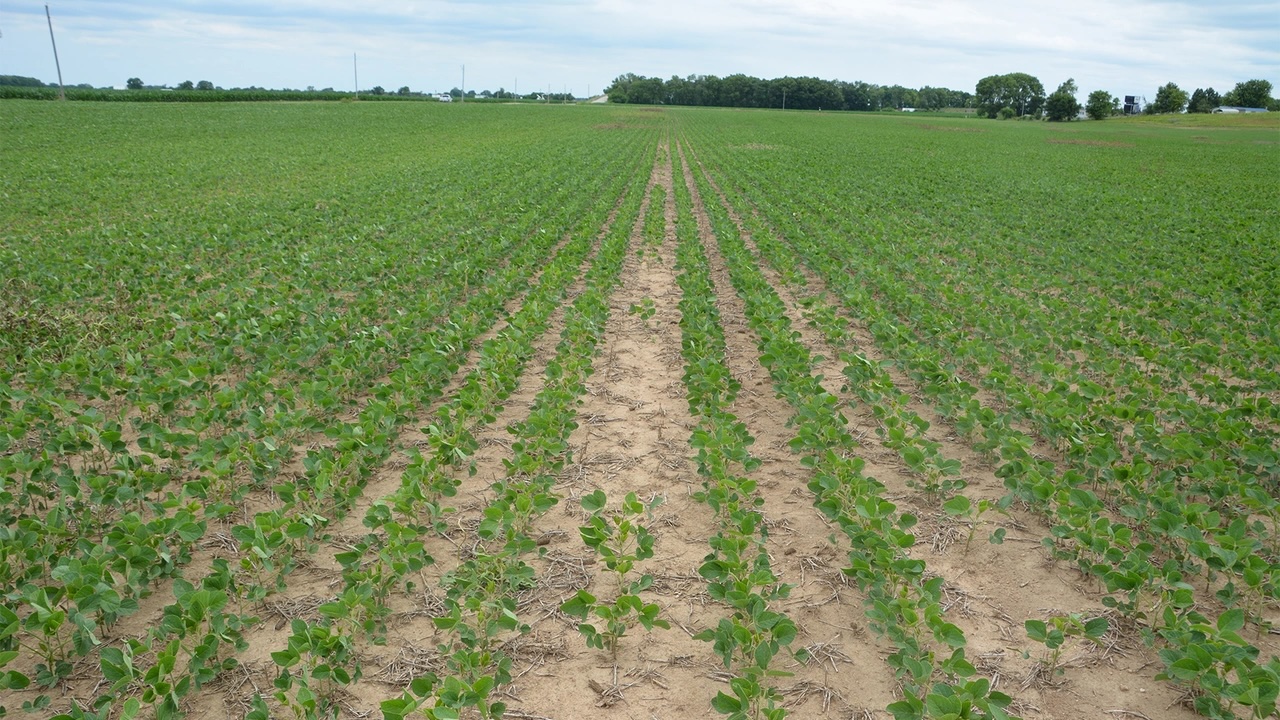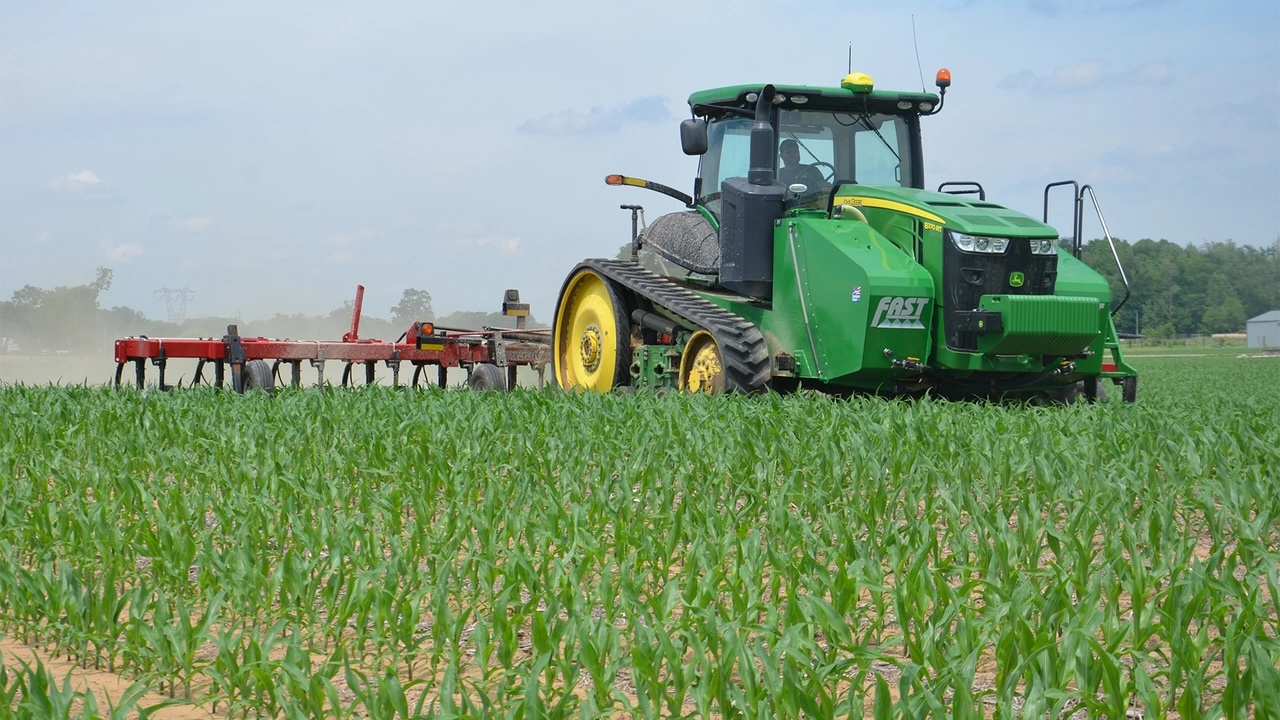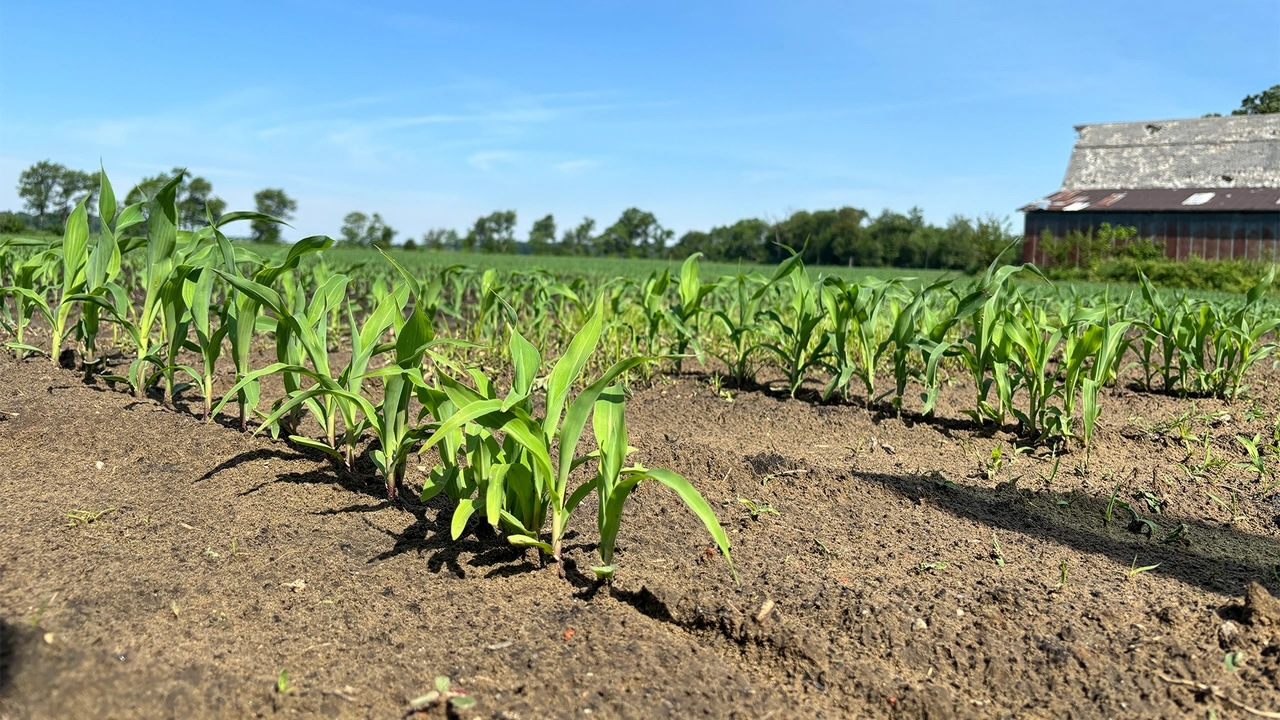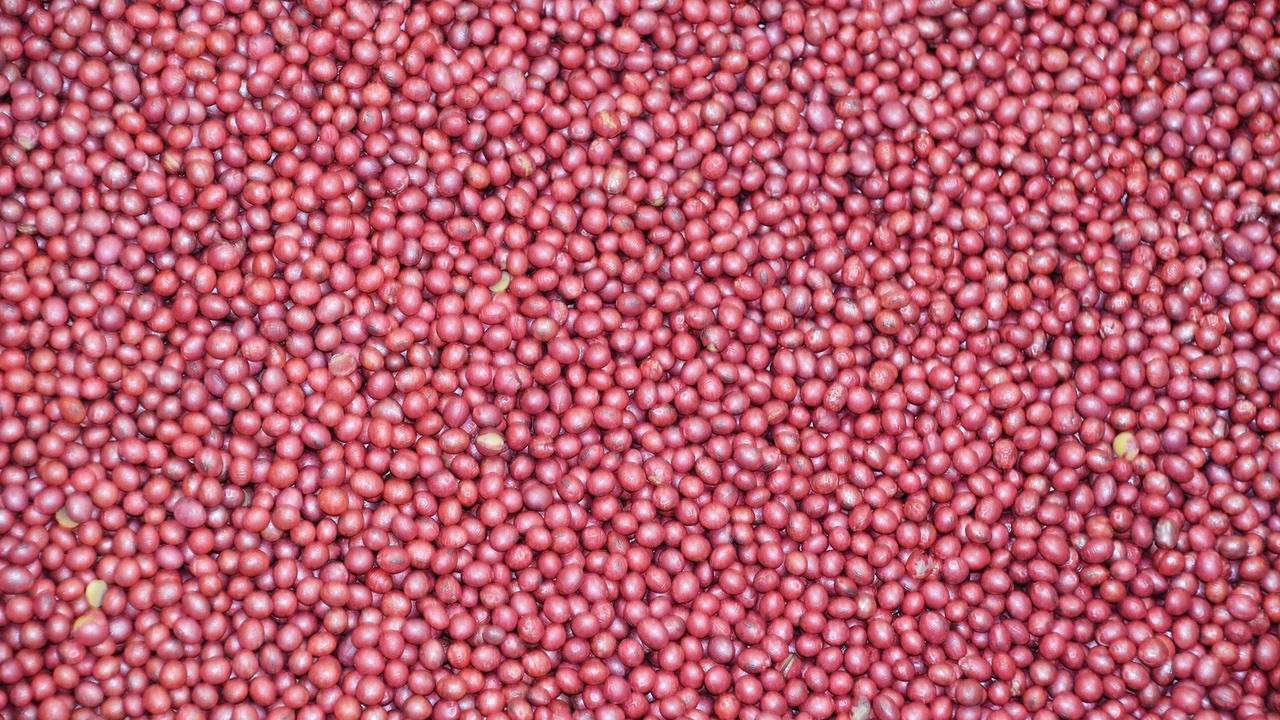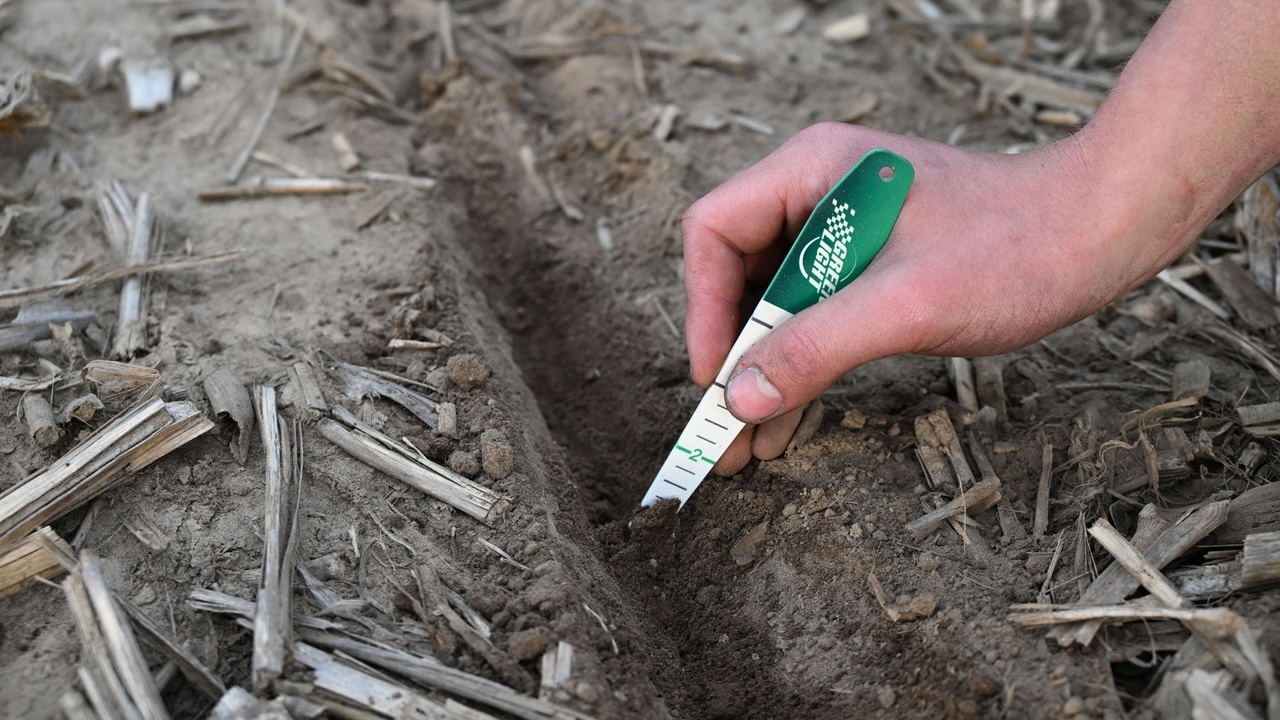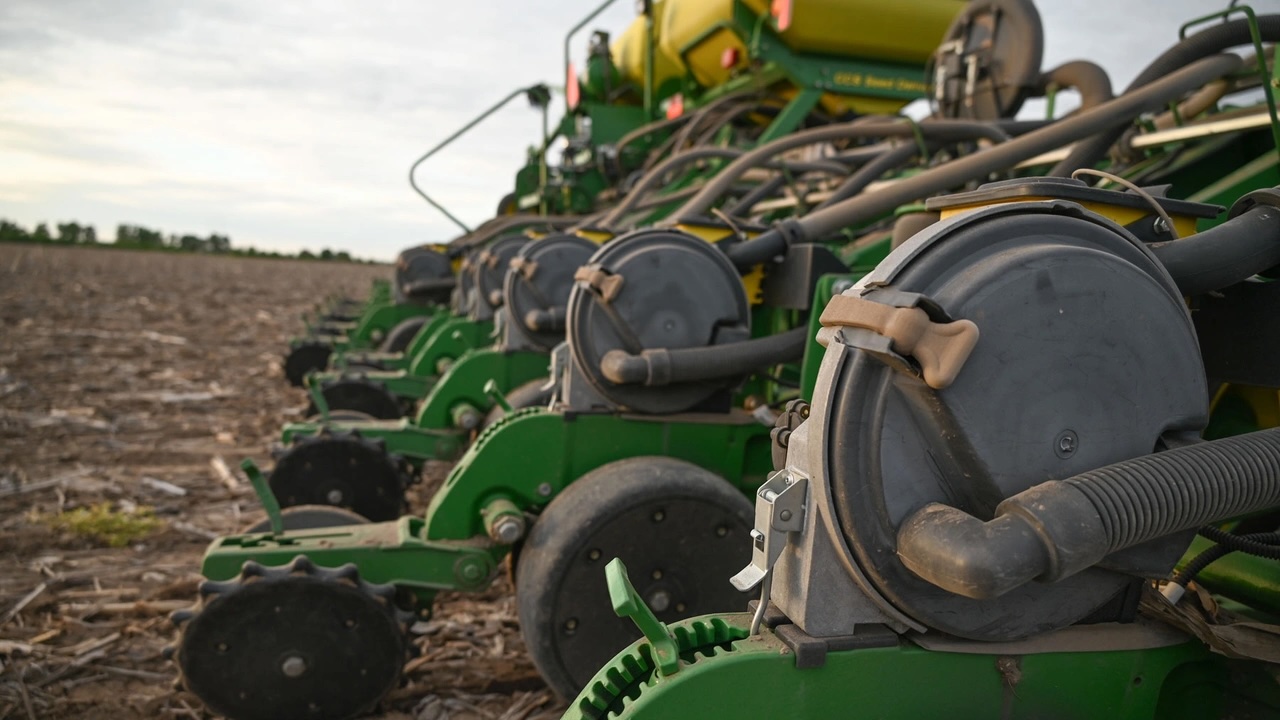Pale corn points toward nitrogen shortage
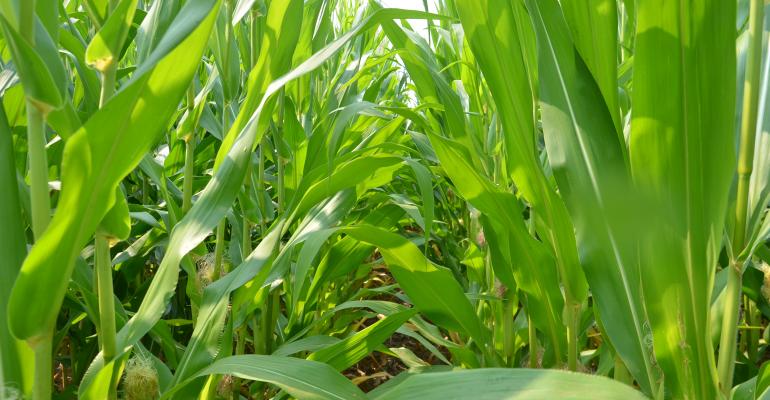
Corn Corner: Other causes of pale-green plants are possible, but nitrogen is the leading suspect.
May 25, 2022
We cut nitrogen rates. We’re seeing pale-green corn. Do we need more nitrogen? How much?
This month’s Indiana certified crop adviser panelists include Betsy Bower, agronomist for Ceres Solutions, Lafayette; Greg Kneubuhler, G&K Concepts Inc., Harlan; Bryan Overstreet, Purdue Extension educator, Jasper County; and Dan Quinn, Purdue Extension corn specialist.
Bower: You may have already started to negatively impact yield, but you can stop the bleeding with adding nitrogen. Two tools we use at Ceres Solutions to diagnose low nitrogen levels are a tissue test and soil nitrogen test. For a tissue test, pull uppermost leaves with a collar from 25 plants and send them to a lab. Both SureTech Labs and A&L Laboratories have good turnaround times. Also determine if phosphorus, potassium, sulfur, magnesium, zinc, boron, manganese and micros are low. Perhaps your pale-green field isn’t due to nitrogen but to some other nutrient or combination of nutrients. A tissue test provides info on what is likely low, but it won’t tell you how much to add.
A soil nitrogen test reveals nitrogen concentration in the upper 12 inches and indicates if nitrogen is at a level to support corn for your intended yield. It’s best used following manure, but Purdue has guidelines for considering soil N levels where commercial nitrogen was used.
If soil N and tissue N are low, another shot of N would likely help. Work with agronomic professionals — ideally more than one — to determine what to apply, how much and by what method.
Kneubuhler: Paler green stalks aren’t a true testament to a nitrogen shortfall but can steer you in a reactive direction. You should still have time to adjust. A tissue sample gives a snapshot of your current nitrogen situation. A soil nitrate-ammonium sample can be a good addition to determining just how much additional N is necessary. Generally, when corn runs short on nitrogen, you’ve already incurred yield loss, but supplemental N can help salvage remaining potential. Rates will depend on test values, growth stage, yield potential and economics.
Overstreet: Take tissue samples and see if N is deficient. You can still apply nitrogen using a high-clearance rig and drops to dribble on 28% N. Use results from tissue samples to guide rate recommendation.
Quinn: Corn can still be improved with nitrogen applied in the late vegetative and early reproductive growth stages. To determine rate, use Purdue University corn nitrogen recommendations. Especially with high nitrogen prices, a lower nitrogen rate may produce a greater economic return, even if some yield is lost. Determining how much nitrogen is lost and should be applied is often difficult. Many different factors influence nitrogen conversion and soil nitrogen availability.
You can use a soil test taken at a 1-foot depth or deeper to assess available nitrate and ammonium in the soil. Take a good, representative soil sample from multiple, small areas within a field. Previous research has identified what expected soil nitrate and nitrate plus ammonium levels should be based on nitrogen already applied. Visit the same website noted above. It’s suggested that no more than 10 pounds of nitrogen per acre should be applied for every 2-parts-per-million reduction in soil sample nitrogen below expected levels.
Leave random, applicator-width strips without additional nitrogen to evaluate the benefit.


